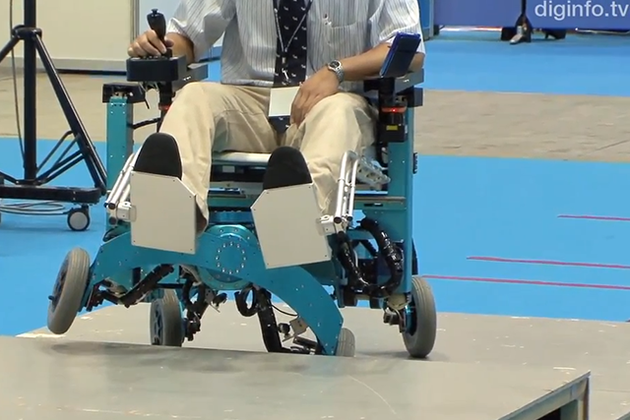Δημιούργημα του Chiba Institute of Technology και ομάδας ερευνητών με την ηγεσία του κου Shuro Nakajima.
Η νέα ρομποκαρέκλα ανεβαίνει σκάλες και μετασχηματίζεται via joystick, ενώ σκανάρει την γύρω περιοχή και με πληθώρα αισθητήραν δίνει ένα απλό user experience.
Αναλυτικά:
“The robot has sensors on its feet, to see if there’s anything nearby. It can also see how far it is from a step. It actually has various sensors, and it uses them in combination, to assess how big a step is. Even if the sensors are in error, and the wheels touch an obstacle, the wheel torque can vary, so the robot can use that as back-up, too. In this way, the robot can detect the road surface reliably.”
“If a sensor detects a step, the robot calculates whether it can lift that leg. It can’t raise its wheels right away, so the steering system at the rear makes preparatory motions to gain stability. When the wheels can be raised stably, the robot lifts its legs.
“We were particular about using wheels, because this kind of vehicle will mostly move on ordinary paved surfaces. The most efficient way of getting around on paved surfaces is to use wheels, like a car. So, this robot mainly uses wheels, but the wheels can become legs.”
“For now, we’re presenting this system and form as a concept, and the motion has mostly been worked out. So, we’re at the stage where we can show this robot to the world. In the next phase, we’ll get a variety of people to try it, so we can fine-tune the user experience.”
